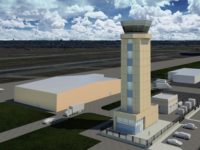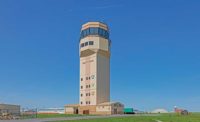The design-builder team of Hensel Phelps and Fentress Architects recently joined U.S. Secretary of Transportation Ray LaHood, acting Federal Aviation Administration administrator Michael P. Huerta, Mayor Edwin M. Lee and airport director John L. Martin in officially breaking ground for San Francisco International Airport’s new air traffic control tower.


The new control tower will be located between Terminals 1 and 2, east of the existing tower. It will be 228 ft tall and will feature a 650-sq-ft controller work area. The tower will sit atop a three-story, 44,000-sq-ft base building, which will house administrative offices, computer equipment, a backup generator and secure corridors through which passengers can transit between terminals. The current tower, which the FAA commissioned in 1984, is about 180 ft tall and has a 520-sq-ft controller work area.
The current air traffic control tower no longer meets current seismic standards and it is not cost effective to retrofit the facility, says Martin. The seismic design for the new tower allows for the structure to withstand a magnitude 8 earthquake. The top of the tower has also been designed to not sway with wind loads to ensure better comfort for the controllers.
Martin adds that estimates show that more than 400 construction jobs and more than 200 support positions will be created during the construction of the tower and associated facilities.
The project goal is to achieve LEED gold certification, says Martin. Part of that initiative will be to provide solar panels, integrate eco-friendly mechanical and technical systems wherever practical, use sustainable building materials, and construct the facility in the most environmentally responsible manner.
The construction of the new tower is scheduled to be completed in the fall of 2014 and fully operational by the FAA in the fall of 2015.
HNTB designed the tower while the structural engineering concepts were developed by Rutherford & Chekene. The structural engineer of record will be Walter P. Moore, who is a sub-consultant to the Hensel Phelps/Fentress team.



Post a comment to this article
Report Abusive Comment